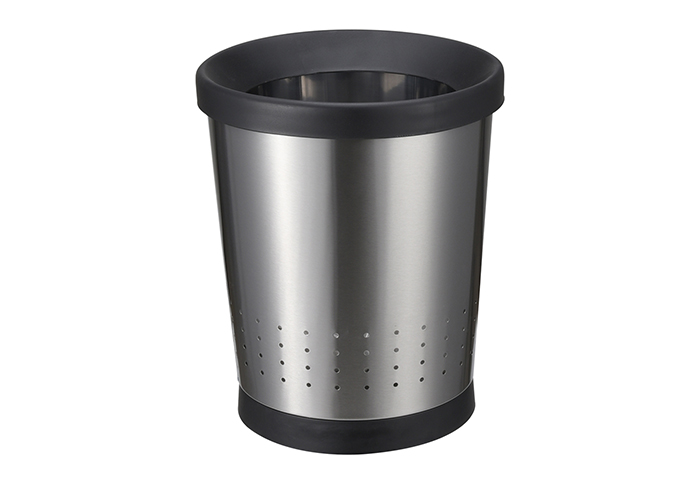The unsung hero: a comprehensive guide to waste baskets
In the intricate dance of waste management, the Waste Basket emerges as a silent yet essential player. This comprehensive guide aims to unravel the mysteries of the Waste Basket, exploring its definition, enumerating the myriad advantages it brings to our daily lives, detailing the various types available, delving into its diverse applications, and concluding with a practical Waste Basket Buying Guide to help you make informed choices for efficient waste disposal.
What is a Waste Basket?
A waste basket, often referred to as a trash bin or rubbish bin, is a small container designed for the disposal of non-recyclable waste generated in homes, offices, and various other spaces. These baskets are typically smaller in size compared to larger waste containers and are intended for daily use, providing a convenient and accessible solution for the disposal of everyday trash. Learn more about What is a Waste Basket?
We are a professional Waste Basket manufacturer in China, we provide high quality professional Waste Basket and provide OEM/ODM customization services

Advantages of Waste Basket:
Convenience: One of the primary advantages of a waste basket is its convenience. Placed strategically in different rooms, waste baskets offer a practical and easily accessible solution for the disposal of everyday waste.
Odor Control: Many waste baskets come with lids or liners that help control unpleasant odors, preventing them from permeating the surrounding environment.
Space Efficiency: Waste baskets are designed to be compact and fit seamlessly into various spaces, making them an efficient waste disposal solution in rooms with limited space.
Versatility: Available in various materials, designs, and sizes, waste baskets can complement the aesthetics of different rooms while serving a functional purpose.
Sustainability: By providing a dedicated space for non-recyclable waste, waste baskets encourage individuals to separate recyclable and non-recyclable items, contributing to sustainable waste management practices.
Types of Waste Basket:
Open-Top Waste Baskets: The most common type, these baskets feature an open top, allowing for easy and quick disposal of waste. They are suitable for general use in offices, bedrooms, and bathrooms.
Lidded Waste Baskets: These baskets come with a lid, providing additional odor control and a more discreet appearance. Lidded waste baskets are often preferred in spaces where odor containment is crucial.
Mesh or Wire Waste Baskets: Featuring a mesh or wire construction, these baskets provide visibility of the contents and offer a sleek and modern aesthetic. They are commonly used in contemporary office spaces.
Pedal-Operated Waste Baskets: Equipped with a foot pedal, these waste baskets allow for hands-free operation, promoting hygiene and minimizing direct contact with the bin.
Recycling Waste Baskets: Designed with multiple compartments, recycling waste baskets facilitate the separation of recyclables from non-recyclables, encouraging environmentally conscious habits.
Applications of Waste Basket:
Office Spaces: Waste baskets are a staple in office settings, providing a convenient solution for the disposal of paper waste, food wrappers, and other non-recyclables.
Bedrooms and Bathrooms: Placed in bedrooms and bathrooms, waste baskets cater to the disposal of personal care items, tissues, and other small non-recyclable items.
Kitchen Areas: In the kitchen, waste baskets handle food packaging, non-recyclable containers, and other daily waste, complementing larger recycling bins.
Public Spaces: Waste baskets are commonly found in public spaces such as parks, malls, and transportation hubs, serving as convenient points for waste disposal.
Waste Basket Buying Guide:
Size and Capacity: Consider the size of the waste basket based on the volume of waste generated in the specific area where it will be placed.
Material: Choose a material that aligns with your aesthetic preferences and durability requirements. Common materials include plastic, metal, and mesh.
Lid Type: Determine whether you prefer an open-top design for quick and easy disposal or a lidded design for enhanced odor control and a neater appearance.
Pedal Operation: For enhanced hygiene, consider a waste basket with a pedal-operated mechanism, allowing for hands-free operation.
Recycling Features: If you aim to separate recyclables from non-recyclables, opt for a waste basket with multiple compartments or consider having dedicated bins for different types of waste in the space.
Aesthetic Considerations: Choose a waste basket that complements the aesthetics of the room or space where it will be placed. Consider color, design, and material to blend seamlessly with the environment.
Brand Reputation: Research and consider the reputation of the brand, looking for user reviews and feedback to ensure the waste basket meets your expectations.
Budget: Determine your budget beforehand and explore options within that range. Waste baskets are available at various price points, so it's essential to balance features with affordability.
Conclusion:
In conclusion, the waste basket, often overlooked in its simplicity, emerges as an indispensable element of daily waste management. Understanding its advantages, the variety of types available, diverse applications, and utilizing the Waste Basket Buying Guide provided, you can now make informed decisions to enhance the efficiency and cleanliness of your living and working spaces.
